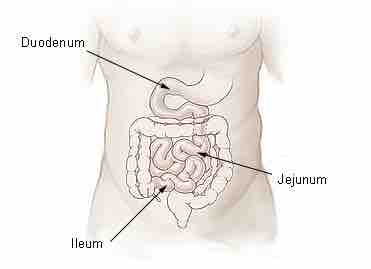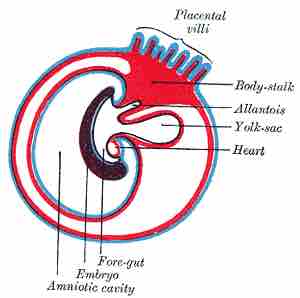The gut or gastrointestinal tract is an endoderm-derived structure. At approximately the sixteenth day of human development, the embryo begins to fold ventrally (with the embryo's ventral surface becoming concave) in two directions: the sides of the embryo fold in on each other and the head and tail fold toward one another.
As a result, a piece of the yolk sac (the endoderm-lined structure in contact with the ventral aspect of the embryo) is then "pinched off" to become the primitive gut. The yolk sac remains connected to the gut tube via the vitelline duct. Usually this structure regresses during development; in cases where it does not, it is known as Meckel's diverticulum.
During fetal life, the primitive gut can be divided into three segments: foregut , midgut , and hindgut . These terms are regularly used to describe both segments of the primitive gut and components of the definitive gut.

Small Intestine
The midgut is the portion of the embryo from which most of the intestines develop. The hindgut (or epigaster) is the posterior (caudal) part of the alimentary canal.
In later development each segment of the gut gives rise to specific gut and gut-related structures. Components derived from the gut proper, including the stomach and colon, develop as swellings or dilatations of the primitive gut. In contrast, gut-related derivatives—that is, those structures that derive from the primitive gut but are not part of the gut proper—mainly develop as out-pouchings of the primitive gut. The blood vessels supplying these structures remain constant throughout development.

Foregut
Diagram showing the expansion of amnion and delimitation of the umbilicus.